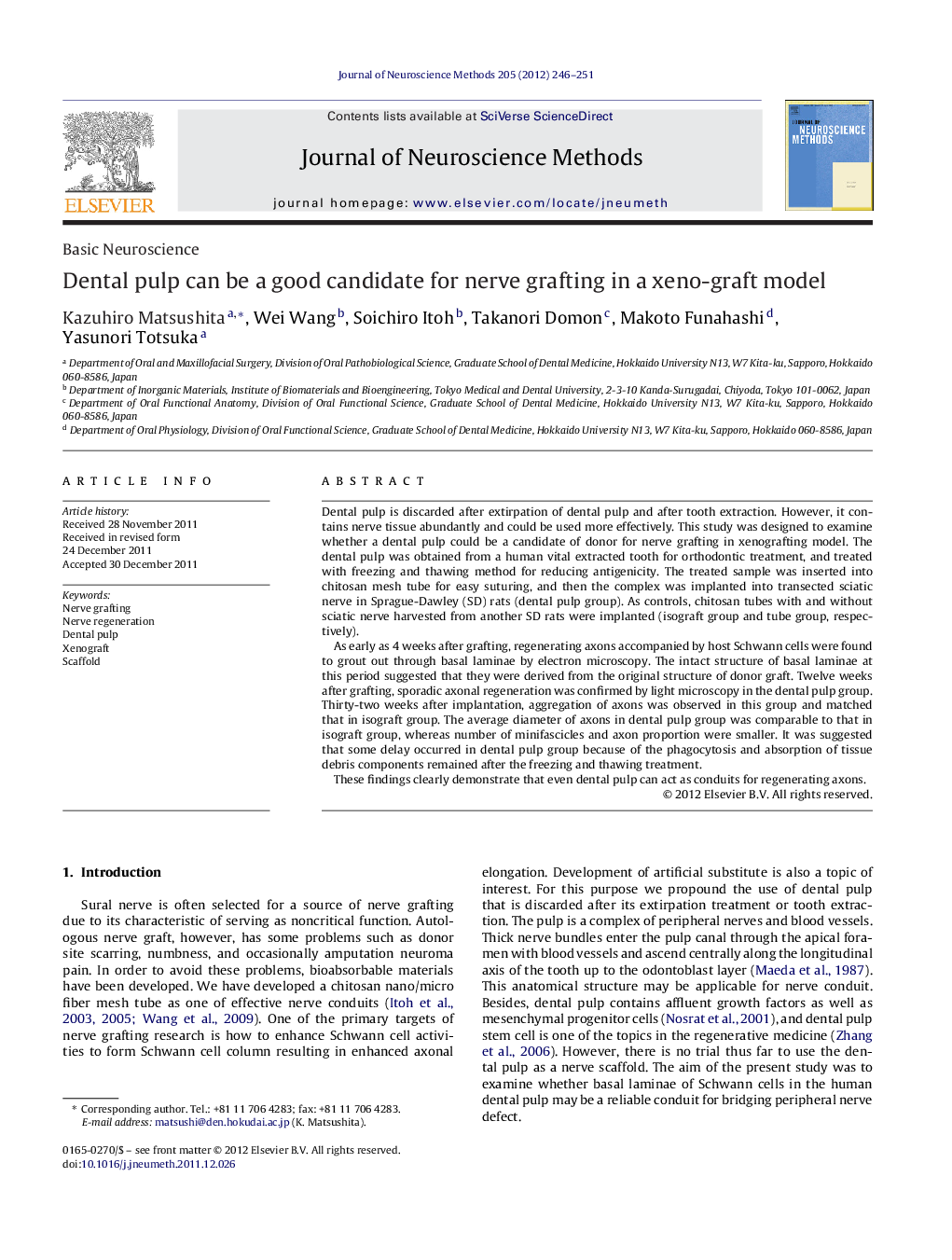| Article ID | Journal | Published Year | Pages | File Type |
|---|---|---|---|---|
| 6269309 | Journal of Neuroscience Methods | 2012 | 6 Pages |
Dental pulp is discarded after extirpation of dental pulp and after tooth extraction. However, it contains nerve tissue abundantly and could be used more effectively. This study was designed to examine whether a dental pulp could be a candidate of donor for nerve grafting in xenografting model. The dental pulp was obtained from a human vital extracted tooth for orthodontic treatment, and treated with freezing and thawing method for reducing antigenicity. The treated sample was inserted into chitosan mesh tube for easy suturing, and then the complex was implanted into transected sciatic nerve in Sprague-Dawley (SD) rats (dental pulp group). As controls, chitosan tubes with and without sciatic nerve harvested from another SD rats were implanted (isograft group and tube group, respectively).As early as 4 weeks after grafting, regenerating axons accompanied by host Schwann cells were found to grout out through basal laminae by electron microscopy. The intact structure of basal laminae at this period suggested that they were derived from the original structure of donor graft. Twelve weeks after grafting, sporadic axonal regeneration was confirmed by light microscopy in the dental pulp group. Thirty-two weeks after implantation, aggregation of axons was observed in this group and matched that in isograft group. The average diameter of axons in dental pulp group was comparable to that in isograft group, whereas number of minifascicles and axon proportion were smaller. It was suggested that some delay occurred in dental pulp group because of the phagocytosis and absorption of tissue debris components remained after the freezing and thawing treatment.These findings clearly demonstrate that even dental pulp can act as conduits for regenerating axons.
Graphical abstractDownload full-size imageHighlights⺠We examined whether dental pulp could be a candidate of donor for nerve grafting. ⺠The dental pulp was obtained from a human vital extracted tooth. ⺠After reducing antigenicity, it was implanted into transected sciatic nerve in rat. ⺠Histological investigation revealed sporadic axonal regeneration. ⺠Basal laminae of Schwann cells acted as an effective scaffold.
